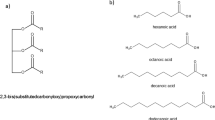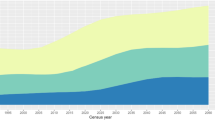Abstract
Although conventional biomedical research has largely focused on mechanisms of weight loss and genetic aspects of obesity, most medical solutions are plagued by side-effects and fraught with complex questions. As a consequence, consumers are seriously considering herbal products, nutraceuticals and functional foods as alternatives to conventional medications. This is evidently driven by a growing consumer understanding of diet/disease links, aging-related consequences, rising health care costs, and advances in food technology and nutrition. This study investigated the effects of up to 12 months exposure to a multinutrient and botanical extract supplement (Metabolic Nutrition System Orange (MNSO) - sold by AdvoCare, Carrollton, TX, USA) at five dietary concentrations on serum biochemistry and target organ histopathology of the hearts of B6C3F1 mice. The MNSO is a unique combination of vitamins, minerals, omega-3 fatty acids and herbal extracts designed to provide a strong foundation of nutritional support, and to enhance thermogenesis and perception of energy. The MNSO contain extracts of citrus, ephedra, guarana, gingko, green tea and Ocimum. In this study, female B6C3F1 mice were fed control (−MNSO) or MNSO (one time to ten times, one time = daily human dose) diets. Animals were sacrificed after 4, 8 and 12 months’, at which time blood was collected for serum chemistry analysis, and hearts were prepared for histopathology and tissue biochemistry. Food consumption and body weight changes were also monitored throughout the study. The MNSO exposure did not significantly affect any of the cardiosensitive enzymes [including creatine kinase (CK), lactate dehydrogenase (LDH) and aspartate aminotransferase (AST)] and normal histopathological architecture of the heart was observed. Although animals given the MNSO diet consumed more food, they were relatively leaner and more active compared to controls. The results indicate that ingestion of ephedra and caffeine for one year in the doses used as part of a comprehensive metabolic nutrition system does not significantly alter normal serum chemistry or induce any irreversible histological changes in the mouse heart, since this study employed up to ten times the normal human consumption dose of ephedra and the metabolic nutrition system.










Similar content being viewed by others
References
Astrup A, Toubro S, Cannon S, Hein P, Breum L, Madsen J (1990) Caffeine: a double-blind, placebo-controlled study of its thermogenic, metabolic, and cardiovascular effects in healthy volunteers. Am J Clin Nutr 51(5):759–767
Astrup A, Toubro S, Cannon S, Hein P, Madsen J (1991) Thermogenic synergism between ephedrine and caffeine in healthy volunteers: a double-blind, placebo-controlled study. Metabolism 40:323–329
Astrup A, Buemann B, Christensen NJ (1992) The effect of ephedrine/caffeine mixture on energy expenditure and body composition in obese women. Metabolism 41:686–688
Bent S, Tiedt TN, Odden MC, Shlipak MG (2003) The relative safety of ephedra compared with other herbal products. Ann Intern Med 138:468–471
Boozer CN, Nasser JA, Heymsfield SB, Wang V, Chen G, Solomon JL (2001) An herbal supplement containing Ma Huang-Guarana for weight loss: a randomized, double-blind trial. Int J Obes Relat Metab Disord 25(3):316–324
Boozer CN, Daly PA, Homel P (2002) Herbal ephedra/caffeine for weight loss: a 6-month randomized safety and efficacy trial. Int J Obes Relat Metab Disord 26:593–604
Chen KK (1926a) The acute toxicity of ephedrine. J Pharmacol Exp Ther 27:61–76
Chen KK (1926b) The effect of repeated administration of ephedrine. J Pharmacol Exp Ther 27:77–86
Chen KK, Schmidt CF (1924) The action of ephedrine, the active principle of the Chinese drug Ma Huang. J Pharmacol Exp Ther 24:339–357
CRN (2002) The CANTOX report on ephedra. Council for Responsible Nutrition, Washington DC (see http://www.crnusa.org/cantoxoverview.html)
Dulloo AG (2002) Herbal simulation of ephedrine and caffeine in treatment of obesity. Int J Obes Relat Metab Disord 26:590–592
Dulloo AG, Miller DS (1987) Reversal of obesity in the genetically obese fa/fa Zucker rat with an ephedrine/methylxanthines thermogenic mixture. J Nutr 117:383–389
Daly PA, Krieger DR, Dulloo AG, Young JB, Landsberg L (1993) Ephedrine, caffeine and aspirin: safety and efficacy for treatment of human obesity. Int J Obes Relat Metab Disord 17(Suppl 1):S73–S78
FDA (2004) Final ruling on ephedra sales. US Food and Drug Administration, Rockville, MD (see http://www.fda.gov/OHRMS/DOCKETS/98fr/1995n-0304-nfr0001.pdf)
Haller CA, Benowitz NL (2000) Adverse cardiovascular and central nervous system events associated with dietary supplements containing ephedra alkaloids. N Engl J Med 343:1833–1838
Haller CA, Jacob P III, Benowitz NL (2002) Pharmacology of ephedra alkaloids and caffeine after single-dose dietary supplement use. Clin Pharmacol Ther 71:421–432
Molnar D, Torok K, Erhardt E, Jeges S (2000) Safety and efficacy of treatment with an ephedrine/caffeine mixture. The first double-blind placebo-controlled pilot study in adolescents. Int J Obes Relat Metab Disord 24:1573–1578
Morgenstern LB, Viscoli CM, Kernan WN (2003) Use of Ephedra-containing products and risk for hemorrhagic stroke. Neurology 60:132–135
Niemann RA, Gay ML (2003) Determination of ephedrine alkaloids and synephrine in dietary supplements by column-switching cation exchange high-performance liquid chromatography with scanning-wavelength ultraviolet and fluorescence detection. J Agr Food Chem 51:5630–5638
RAND (2003) Evidence Report/Technology Assessment Number 76: Ephedra and ephedrine for weight loss and athletic performance enhancement: Clinical efficacy and side effects. RAND Health Study, RAND Corporation, Santa Monica, CA (see http://www.fda.gov/bbs/topics/NEWS/ephedra/summary.html)
Ray SD (1999) Cell death and apoptosis. In: Ballantyne B, Marrs T, Turner P (eds) General and applied toxicology, vol I. Stockton/McMillan Publications, AZ, Ch 9, pp 176–200
Ray SD, Mumaw VR, Fariss MW (1996) Protection of acetaminophen-induced hepatocellular apoptosis and necrosis by cholesteryl hemisuccinate pretreatment. J Pharmacol Exp Ther 279(3):1470–1483
Shekelle PG, Hardy ML, Morton SC (2003) Efficacy and safety of ephedra and ephedrine for weight loss and athletic performance: a meta-analysis. JAMA 289:1537–1545
Toubro S, Astrup AV, Breum L, Quaade F (1993) Safety and efficacy of long-term treatment with ephedrine, caffeine and an ephedrine/caffeine mixture. Int J Obes Relat Metab Disord 17(Suppl 1):S69–S72
White LM, Gardner SF, Gurley BJ, Marx MA, Wang PL, Estes M (1997) Pharmacokinetics and cardiovascular effects of ma-huang (Ephedra sinica) in normotensive adults. J Clin Pharmacol 37:116–122
Zahn KA, Li RL, Purssell RA (1999) Cardiovascular toxicity after ingestion of “herbal ecstacy”. J Emerg Med 17:289–291
Acknowledgements
Financial assistance received in the form of a grant from AdvoCare International, L.P. is gratefully acknowledged.
Author information
Authors and Affiliations
Corresponding author
Additional information
Portions of this work were presented at the 43rd Annual meeting of the Society of Toxicology, 2004, and American College of Nutrition meetings, 2003.
Rights and permissions
About this article
Cite this article
Ray, S., Phadke, S., Patel, C. et al. Short-term and long-term in vivo exposure to an ephedra- and caffeine-containing metabolic nutrition system does not induce cardiotoxicity in B6C3F1 mice. Arch Toxicol 79, 330–340 (2005). https://doi.org/10.1007/s00204-005-0672-6
Received:
Accepted:
Published:
Issue Date:
DOI: https://doi.org/10.1007/s00204-005-0672-6




